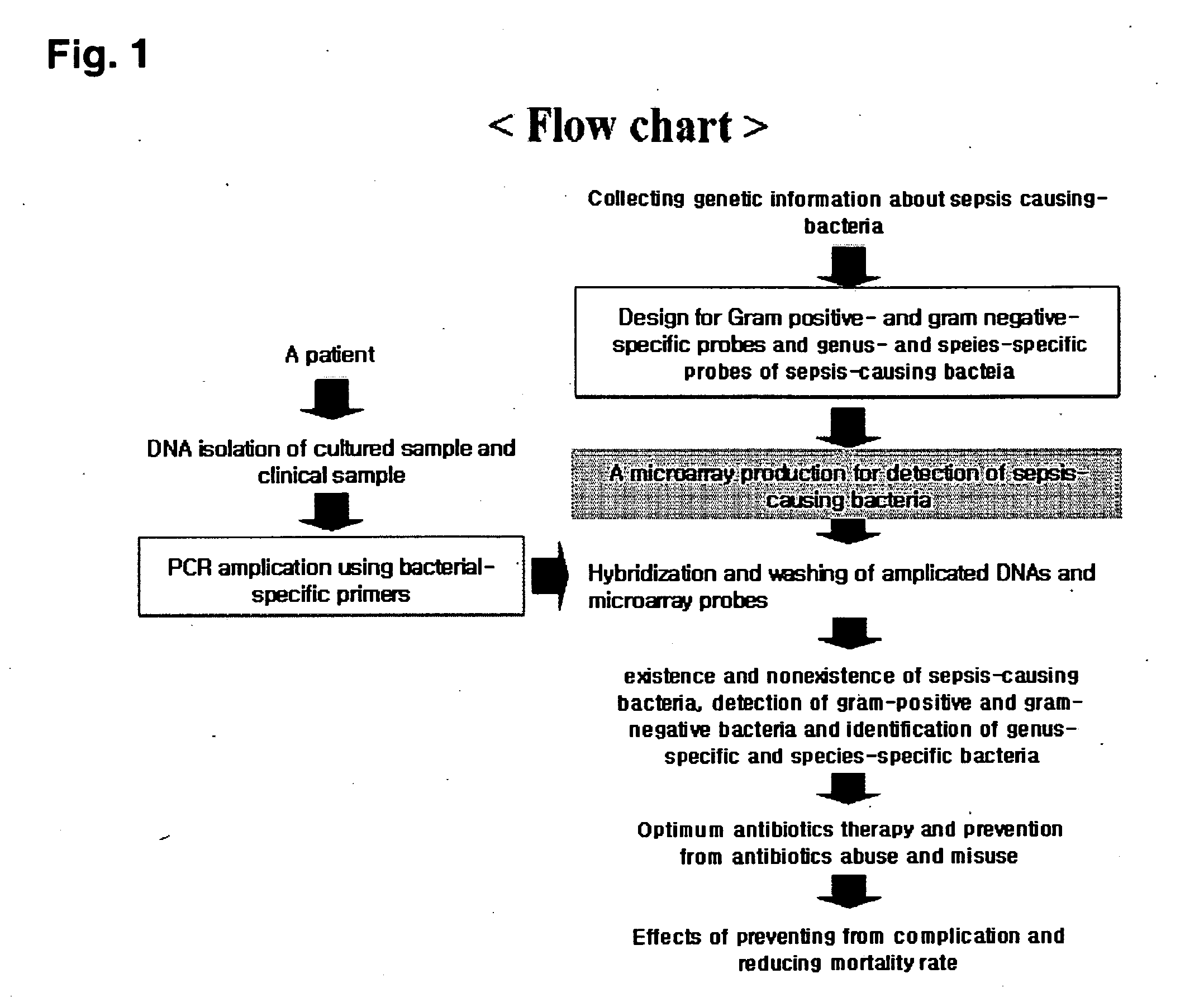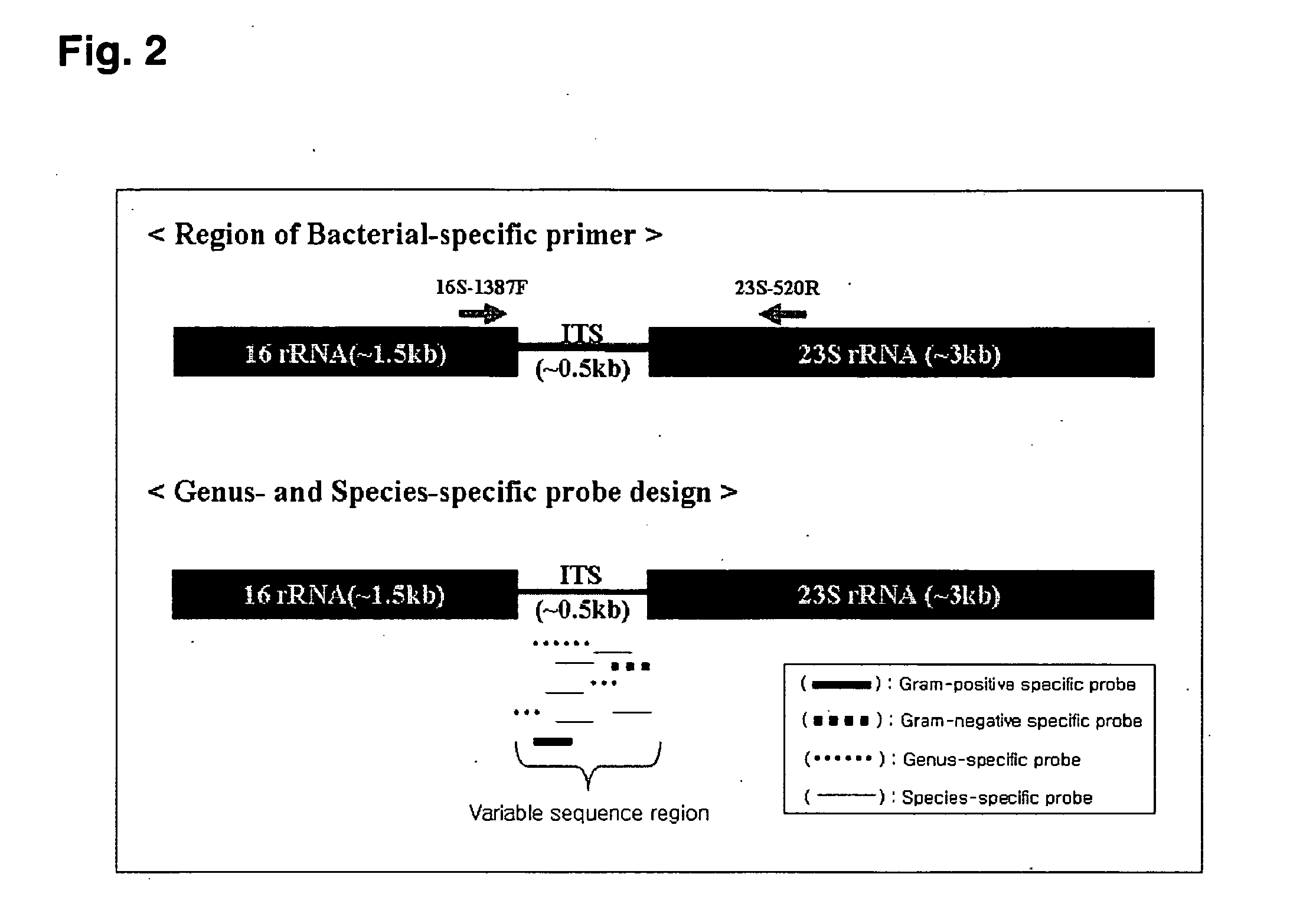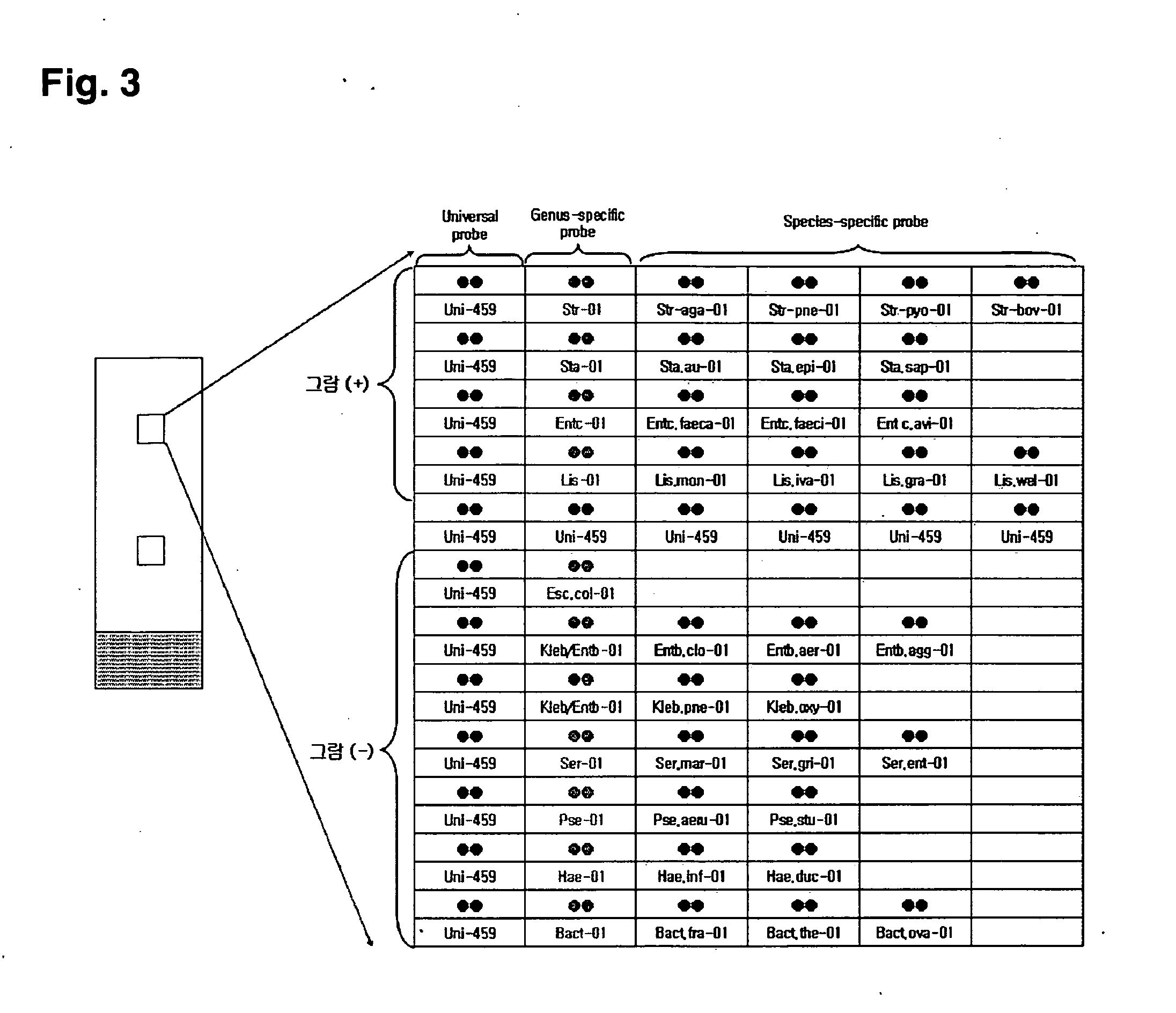Oligonucleotide for Detection of Bacteria Associated with Sepsis and Microarrays and Method for Detection of the Bacteria Using the Oligonucleotide
- Summary
- Abstract
- Description
- Claims
- Application Information
AI Technical Summary
Benefits of technology
Problems solved by technology
Method used
Image
Examples
example 1
Incubation of Bacteria and Isolation of Genomic DNA
[0090]Total 56 kinds of strains were obtained from the American Type Culture Collection (ATCC). The strains were selected in each culturing media under each culturing conditions according to manual provided by ATCC. From the cultured media, strain colonies were obtained with a white gold ear and input 1 ml tube, 100 ul of InstaGene matrix (Bio-Rad, USA) was added thereto and suspended, and reaction was performed at 56° C. for 30 minutes in constant temperature bath. And then, the reactant was shook for 10 seconds, heated at 100° C. for 8 min, shook again for 10 sec, centrifuged at 12,000 rpm for 3 min, recovered DNA.
[0091]The strains used were as followed Table 5:
TABLE 5No.GenusSpeciesGramSource1StreptococcusStreptococcus agalactiae(+)ATCC 138132Streptococcus bovis(+)ATCC 333173Streptococcus pneumoniae(+)ATCC 334004Streptococcus pyogenes(+)ATCC 196155Streptococcus mutans(+)ATCC 251756Streptococcus intermedius(+)KCTC 32687ListeriaLis...
example 2
Preparation of Probes
[0092]All probes used for detection of sepsis-causing bacteria is confirmed specificity of probes by multiple alignment and BLAST searching as selecting ITS target base sequence of sepsis-causing bacteria published in Genbank. In the present invention, gram positive-specific probes of sepsis-causing bacteria is only complementary in species of gram-positive bacteria, is selected from base sequence having very lower similarity to other species. And gram negative-specific probes is only complementary in species of selected gram-negative bacteria, is selected base sequence having very lower similarity to other species. Moreover, in the present invention, genus-specific probes of sepsis-causing bacteria is only complementary in species of each genus, is selected from base sequence having very lower similarity to species of other genus. And species-specific probes is only complementary in each species, is selected from base sequence having very lower similarity to sp...
example 3
Preparation of Taget DNA
[0093]To amplication of ITS target region for detecting sepsis-causing bacteria, there is used as labeling biotin respectively in common primers (forward 16S-1387F: 5′-biotin-GCC TTG TAC ACW CCG CCC-3′) (Applied and Environmental Microbiology, 64 (2), p. 795-799, 1998) of 16S rDNA having been known and common primers (backward 23S-520R: 5′-biotin-NAG MC CTG AAA CCG TGT GC-3′) (Patent No. 04-68313, SEQ ID No. 54) of 23S rDNA which the present inventor develops directly and is pending patent. PCR were carried out in follow condition. Reaction composition is added to water to be 25 ul of total volume after adding 10□ PCR buffer (100 mM KCl, 20 mM Tris HCl (pH 9.0), 15 mM MgCl2) 5 μl, dNTP (deoxynucleoside triphosphates) mixture (dATP, dGTP, dTTP, and dCTP each 10 mM) 1 μl, forward and backward primers (each 10 pmole) each 1 μl, Taq polymerase (5 units / μl, QIAGEN, Inc., Valencia, USA) 0.2 μl, template DNA 4 μl. Reaction condition is denaturation at 94° C. for 3 m...
PUM
| Property | Measurement | Unit |
|---|---|---|
| Force | aaaaa | aaaaa |
| Current | aaaaa | aaaaa |
| Electrical conductor | aaaaa | aaaaa |
Abstract
Description
Claims
Application Information
 Login to View More
Login to View More - R&D
- Intellectual Property
- Life Sciences
- Materials
- Tech Scout
- Unparalleled Data Quality
- Higher Quality Content
- 60% Fewer Hallucinations
Browse by: Latest US Patents, China's latest patents, Technical Efficacy Thesaurus, Application Domain, Technology Topic, Popular Technical Reports.
© 2025 PatSnap. All rights reserved.Legal|Privacy policy|Modern Slavery Act Transparency Statement|Sitemap|About US| Contact US: help@patsnap.com



